How To – Bleed Your Brakes
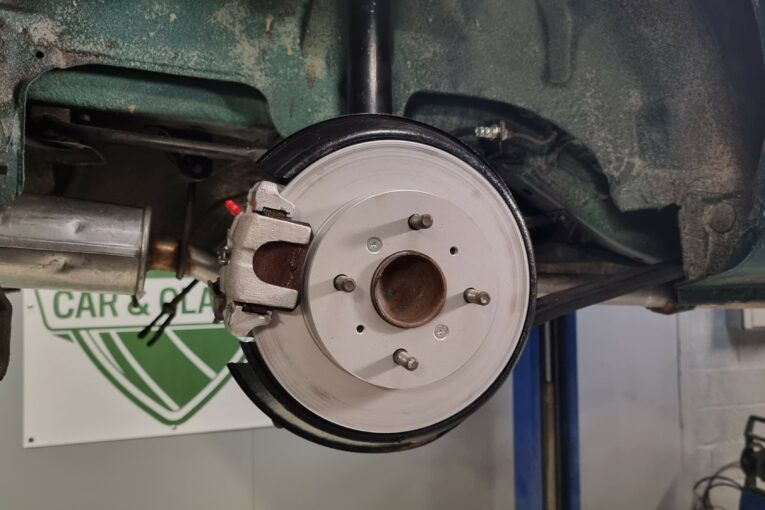
Difficulty

What Do I Need?
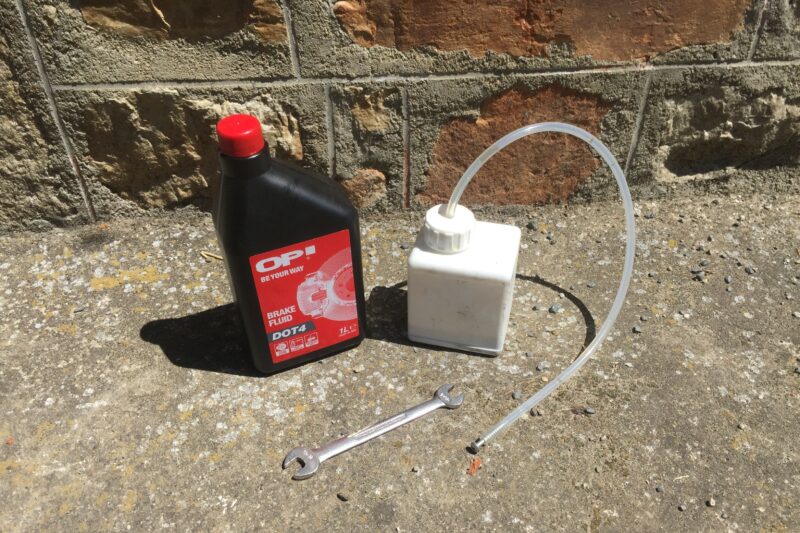
Brake bleed kit
Fresh brake fluid specific to your vehicle
Spanner or socket of the correct size
Brake cleaner (optional)
Why Should I?
The braking system on your car is a sealed, hydraulic system whereby an incompressible fluid is utilised to transfer forces. Basically, when you press the brake pedal the force created travels via the brake fluid to operate the caliper pistons, which in turn move the brake pads to squeeze the brake disc, thereby slowing the car down. This is only possible because the brake fluid cannot be compressed but brake fluid begins to absorb moisture from the moment it’s removed from a sealed container and put into your car. Not only that but brake hoses and lines can become porous over time, allowing even more air and water into the fluid.
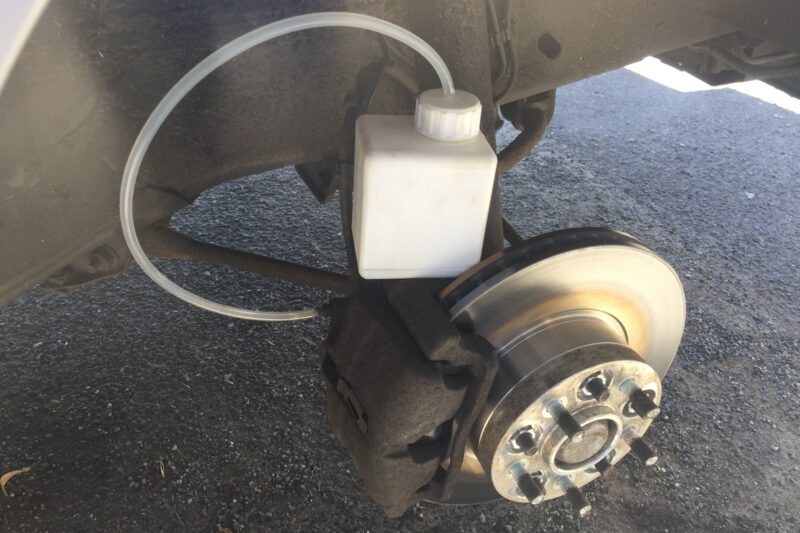
This means that the brake fluid becomes compromised as the high boiling point required by the system is reduced. Not only that but braking efficiency is also affected as air is compressible and as such reduces the efficacy of the entire braking system, so regular flushing of your brake fluid is a vitally important service item and should be carried out every two to three years to ensure optimum performance. It is also necessary to bleed your brakes whenever the system is opened to the elements, such as when you are replacing hoses or calipers, for instance.
Bleeding brakes can seem a little daunting at first if you’ve never attempted it before but it is a simple process that can be successfully completed alone. Yes, it can be done with a friend but for the purpose of this tutorial we will be using a bleed kit that negates the need for any additional help.
Talk Me Through It
NB: when bleeding brakes the general consensus is to start from the furthest corner away from the master cylinder and work back towards it.
1) Depending on your car and particular braking setup it may be possible to bleed the brakes without removing the wheels but for ease of access loosen the wheel nuts and then jack up the car safely and rest it on some axle stands.
2) Remove the wheel and locate the bleed nipple on your brake caliper. It might be a good idea to spray the release nut with a little penetrating fluid at this point.
3) Grab your bleed kit and attach the hose to the bleed nipple on the caliper, keeping the bottle above the nipple.
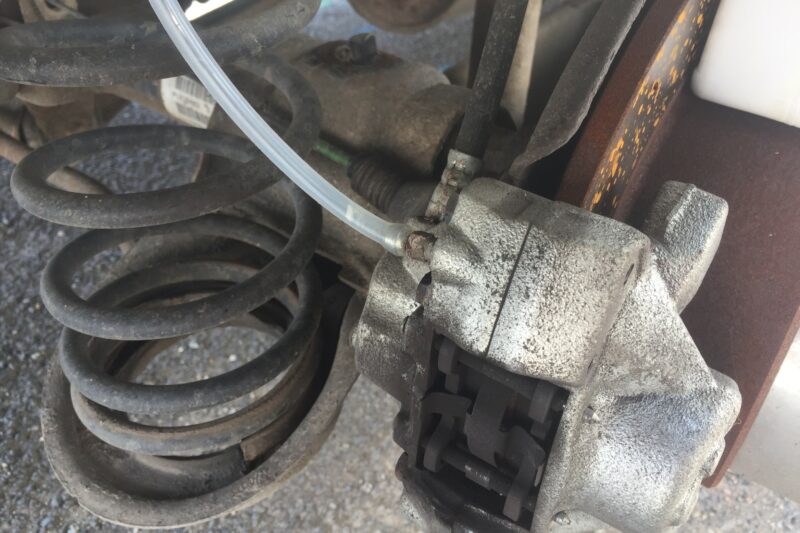
4) Using the correct size spanner undo the nut half a turn – just enough to allow the fluid to escape from the caliper.
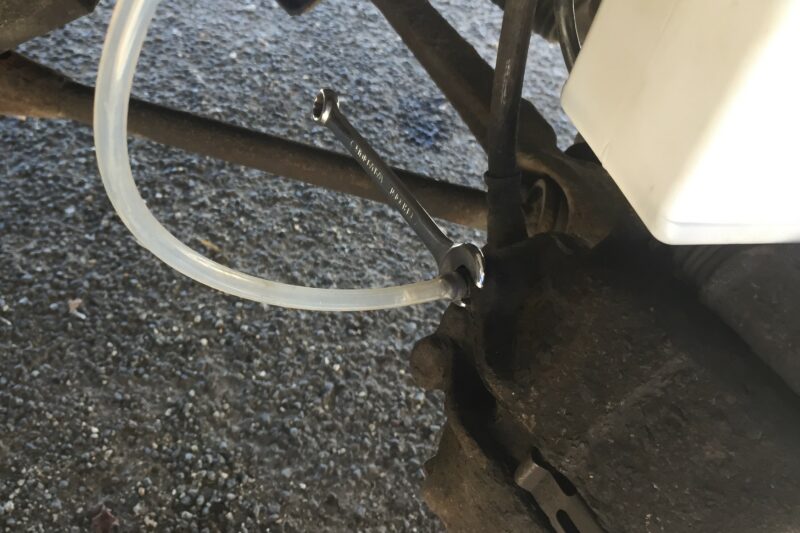
5) Move to the cabin and slowly but firmly depress the brake pedal four or five times.
6) Return to the caliper in question and inspect the attached hose for air bubbles, topping up the brake fluid reservoir as you do so. It’s important to keep the reservoir full of fluid during this process so as to not completely expunge the system.
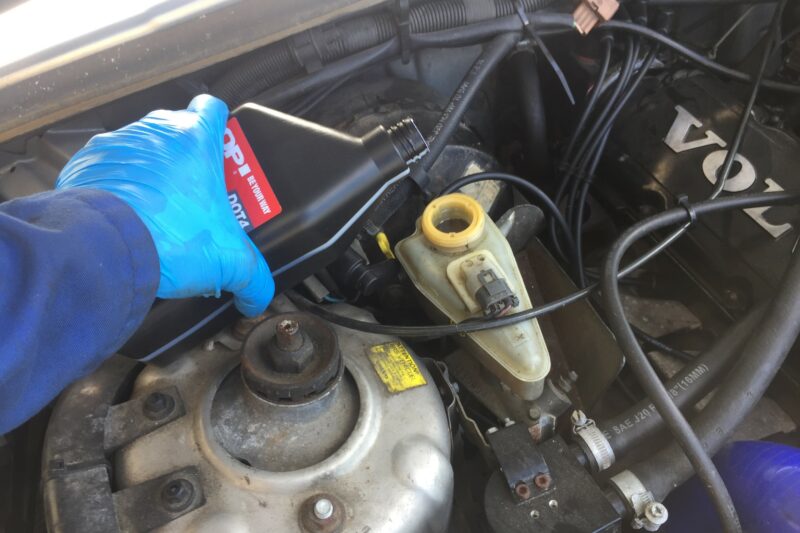
7) Repeat steps five and six until the fluid in the hose is clean and free of air bubbles.
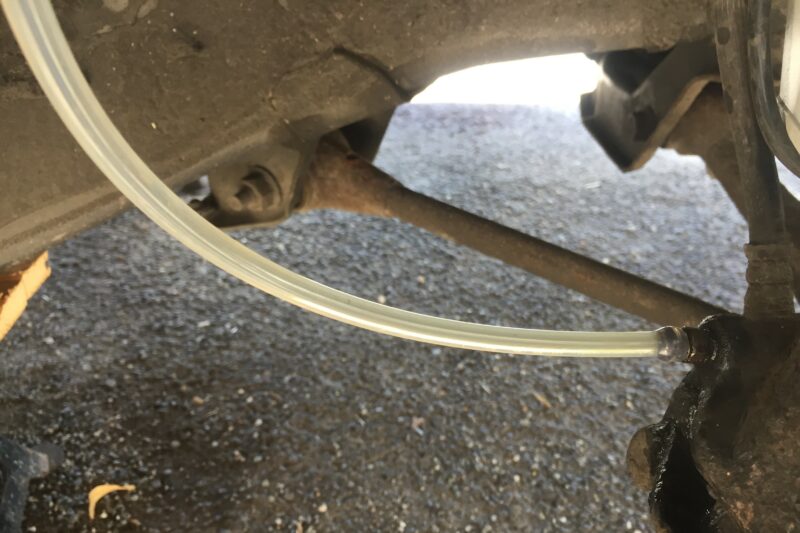
8) Tighten the bleed nipple nut, replacing any dust caps and repeat the entire process for the rest of the brakes.
Conclusion
With a one-person bleed kit featuring a non-return valve, bleeding your classic’s brakes is a far from onerous process and one that can be carried out successfully in less than an hour. As long as you use fresh fluid and make sure to keep the reservoir topped up then you shouldn’t encounter any issues and it needn’t be a barrier to that brake upgrade you’ve been planning. Remember too that brake fluid, whatever the type, will deteriorate over time leaving your brakes operating less than optimally so if you haven’t flushed your system for a while, get out there and get it done. You may be surprised at the difference it makes.


